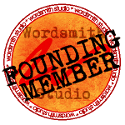
copyright Elissa Field (use w written permission only)
I’m midway through a 4-week break between classes, at the tail end of my Masters. This perfectly coincides with having a printed draft to complete a read-through revision, which makes this a busy writing week.
I’ve been wrestling with technology — finding the most efficient ways to keep track of complicated novel structures while moving large chunks around. I’ve written about mid-level novel revisions often, here, and this revision has had its own insights.
This week, I’m debating moving my outline (the structural spine devised to guide the revisions) into Excel. Complete nerdfest: that allows me to not only graph the chapters and parts, but graph key reveals, reactions, crossing of internal and external conflicts… Not word-nerdy enough? I’ve been obsessively analyzing concepts of action-reaction — the dialogue and external conflicts comprising actions, and all the modes by which characters react, in layers. Worth its own post — a post requested by another venue — but for today…
It’s time for Friday Links for Writers. Not surprising at least one link is a piece on character action. As always, share in the comments to let us know what resounds with you, what you’d like more of, or share your own favorite links. Have a great writing week!
* * * * *
Character Reaction — Make Your Character Respond
On The Editor’s Blog, Beth Hill discusses the need to reveal character in the written responses to action and events. While I’ve been considering a dozen different layers to response, she covers the big 4: action, dialogue, thought, and emotion.
Okay, so this will be, what, the third Donald Maass piece I share lately? Yeah well, he must be good at getting one thinking. His latest post at Writer Unboxed talks about using the most emotionally charged details to power your writing (and delete the rest). Experiences shared in the comments are just as inspiring as the initial piece.
 Found on Pinterest: Plot Timeline Infographics
Found on Pinterest: Plot Timeline Infographics
Plotter or pantser, I strongly believe in understanding (or planning) the best structure for the novel you’re writing. In revising Never Said, that backbone has been key to building a more complex story than would have been possible without it. The link above goes to pin for the “first act”. Click here to find Act 2 and here for Act 3. Want more? Clicking the pins takes you to the original articles.
How Mapping Alice Munro’s Stories Helped Me As a Writer
And, hey, if I’m confessing my inner word nerd… well, look, Elizabeth Poliner was geeking out on diagramming Alice Munro, too. For me, it’s been a mix of Anthony Doerr and Tana French – but, point is, if you’re diagramming your favorite writer, you’re not alone.
Print Products: Turn Your Book into a Notebook or Workbook
Many of my readers may already have stumbled on Joanna Penn, who has been generous, as her self-publishing career took off, to share creative ways to make a living with your writing. This post is just that, with advice on how to create accompanying workbooks or other print materials from your existing book (especially nonfiction). This would be a great approach for speaking engagements and workshops.

Santiago Caruso via The Guardian
On Charlotte Bronte’s 200th Birthday: Illustrating Jane Eyre
This one is just for a little inspiration, for any of us kindling a love for the Brontes. A Guardian piece, featuring the Gorey-esque artwork of Santiago Caruso depicting scenes from Jane Eyre.
Ta-Nehisi Coates: the Privilege of Writing from in the Mess
I loved this answer Ta-Nehisi Coates gave to a Howard University student who asked him what responsibility he thought writers have. The link above gives that one answer. Or, here is the full conversation between him and professor Greg Carr, including a reading from Between the World and Me.
* * * * *
What Are You Working On?
April seemed to be a huge month for writers using challenges to reach writing goals — and just as many of my friends hit May (and look forward to summer) with editing now on their mind. What is your current writing goal? What challenges or strategies keep your going or make hurdles in your work?
Have you come across any great writing links or resources lately?
Do share your thoughts or links in the comments.
* * * * *
If you like this blog, be sure to click the WordPress +follow button, or follow via email or Bloglovin options in the sidebar. You can find me on Twitter @elissafield or on Facebook.

Round tower bend, Waterford, Ireland. copyright Elissa Field.
For more Friday Links for Writers:
- Friday Links for WritersL 04.29.16
- Friday Links for Writers: Quirky Research Sources for Writers #3
- Scan summaries of the links shared on mostFriday Links posts: hover over individual post-titles listed on the Links & Where to Find Me page




 Emily Carpenter,
Emily Carpenter,  Sara Novic,
Sara Novic,  n, gravedigger wit of this first time around — but the advice rings much more somber, post 9/11.
n, gravedigger wit of this first time around — but the advice rings much more somber, post 9/11.















